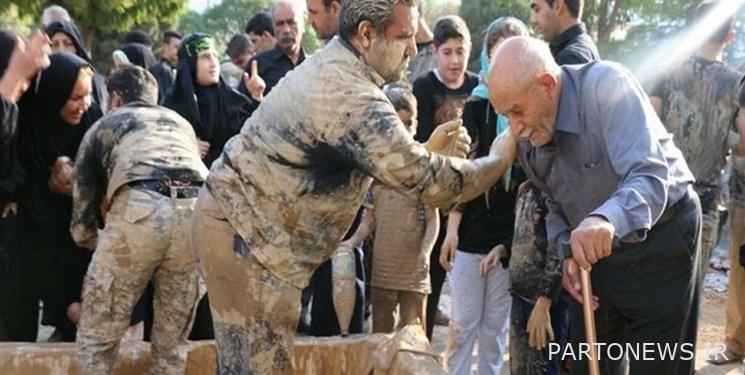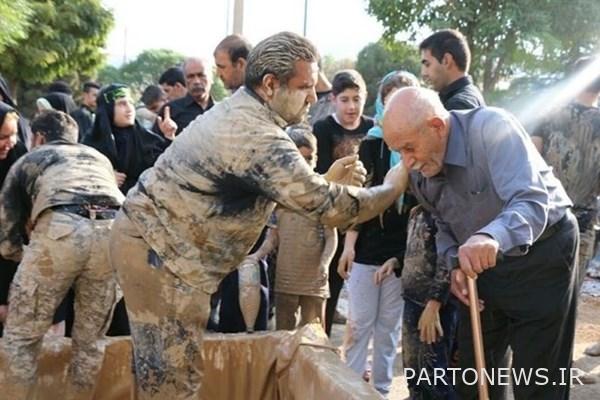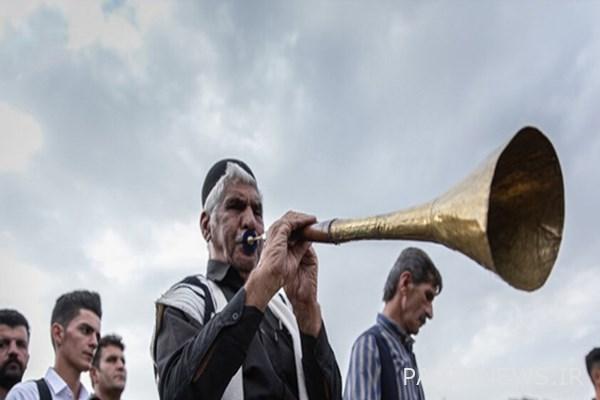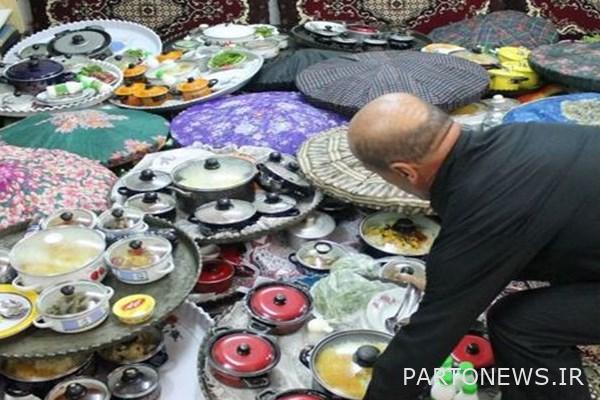What are the customs and traditions of the Bakhtiari people in the funeral / gift of the guests to the mourners?

Life group:Taz is a kind of condolence ceremony for the dead of Bakhtiari people. This ceremony is known as “Taz” among the Chaharlang tribes and as “Mafeh” or “Mafgah” among the Haft Lang tribes. According to the Fars News Agency, a kind of condolence ceremony for the dead of the Bakhtiari people.
This ceremony is known as “Taz” among the Chaharlang tribes and as “Mafeh” or “Mafgah” among the Haft Lang tribes. Such a ceremony is held in mourning for the elders of the tribes, famous men of the region.
Zohreh Rastegarfard, Master of Iranian Studies, wrote in a note about the ceremony: “Having the financial capacity, manpower, the right place and time were the conditions for holding this ceremony, and the best time to hold it is mid-spring to early autumn.
What happens in the new ceremony?
Otherwise, due to the winter migration of tribes and clans in winter resorts and settlements in the tropics, there is no opportunity to hold such a ceremony. The ceremony may be postponed for several weeks or even months after the death of the deceased, even at appropriate times due to disputes and conflicts between the tribes.
This ceremony is held in the village or in Tazega (a large and relatively open space for holding ceremonies).
After the decision is made to hold the ceremony, in a meeting attended by the families of the deceased and relatives of the deceased, the expenses of the ceremony are estimated and each member of the family receives a share according to their financial capacity.
Holding a dignified ceremony is very important for the relatives, family, gens and clan of the deceased. To make the ceremony as good as possible, all the relatives prepare preparations such as bread, oil, rice, meat, tea, sugar, firewood, water, etc., and the responsibilities are divided among the people, so that all the people are well They perform their duties.
Construction of pavilions
To perform the Taz ceremony, a group of the deceased tribe went to the Tazgeh site with all their black tents. Cement mortar is made. (In the past, the pavilion was made of dry China or it was made with mud mortar)
The height of this building is about one meter and its length is one to five meters, sometimes several stairs are built to climb the pavilion. The paved stone structure of the pavilion is respected by the family and it is considered disgusting to insult it.
After the construction of the pavilion is completed and built, it is furnished and decorated with hanging black cloths. Put. Sometimes a rifle is thrown around Pazan, which is an allusion to the deceased being a hunter. Clothes, a gun and a picture frame of the deceased are also placed on the pavilion.
Black tents are set up for the guests to sit in a regular crescent shape around the pavilion. All black tents are carpeted and catering facilities are provided for guests. Behind the guests’ tents are the logistics tents. The tents are set up so that all the mourning ceremonies can be seen by the guests.
The arrangement of the tents and their distance from each other and from the pavilion is such that the sounds are not lost and the sad song of mourning can be heard completely and clearly.
The song of “Tushmals” in the mourning ceremony
After decorating the pavilion and setting up the guests’ tents, Toshmal (local instrumentalists), who may number from three to five, are invited to attend the ceremony. The mourners sit on the pavilion during the mourning ceremony and play the left chord from the beginning to the end of the ceremony.
The left instrument is actually a small horn and is used in mourning ceremonies, other instruments such as the horn and in some parts of the horn are other instruments used in mourning. The women sing the servo, following the song of the left instrument.
The family and close relatives of the deceased adorn their stray horses with colored and black cloths from the forehead to the back (slaughtered). On the saddle and saddle of each horse, one or two handguns and weapons are often hung upside down (in the local culture, inverting objects is a symbol of death and ugliness), and the slaughtered horses are turned by teenagers around the pavilion in a special order. .
When everything is ready for the reception and according to the plan, the tribes that have been invited to the ceremony by letter a few days ago, will participate in the Fateha.
New ceremony clothes and clothing
It may take up to a week to invite the tribes, and the tribes may be invited to participate in the ceremony on different days. The guests prepare for the ceremony before entering the main place, in such a way that the women open their headbands (scarves, t-shirts, saves and vans) and put them around their necks, and tie the tents around their necks and waists and tie them. And the men rubbed their heads and shoulders with flowers, took off their hats, and slaughtered the horse and brought it with them.

The women move a few steps ahead of the men, tapping their hair on their heads and chests, and the veŝat – the same wailing that accompanies plucking hair and scratching the face with nails – enters the ceremony and They go to the women’s tent, and wail around the pavilion and the photos and clothes of the deceased that are placed on the pavilion.
One of the women, who has a happy solo voice, sings Gagrio (sad poems, mourning, hair) and the other women accompany him in groups.

What is the gift of the guests to the mourners?
At this time, the hosts comfort the men and women and invite them to calm down. A teenager from the host family picks up the slaughtered horses of the guests, takes them around the pavilion and spins them, and then ties it to the other slaughtered horses.
The mourners stood in long, regular lines, and the guest men stood in front of them. With the arrival of each group of guests, the mourners go a few steps ahead of their place and the group of guests and the host clap their heads in front of each other and shout loudly the baboon baboon baboon baboon.
Then some of the hosts go ahead and stop them from babbling. After reciting the Fateha, they set up tents under the black for rest and reception. Once again, after the male guests have settled down, one of the newcomers announces the recitation of al-Fatihah aloud. They offer their condolences to the hosts and then sit down, and a group of hosts sit in front of the guests for a few minutes in order and respect.
The guests are then entertained. In this way, lunch is prepared in a fresh place, which is called meat stew, meat stew or meat stew. This food is served to two or three people in a tray called “Majma” in the area.
In ancient times and sometimes today it was customary for this food to be eaten by hand, and before that it was brought by the host to the sun and the pelvis to wash the guests’ hands. The large number of manpower in this ceremony is necessary because the ceremonies in front of the guests, including the reception, reception, meeting and departure, must be done in a dignified manner.

Guests may bring tusmal bands to pay their respects to the deceased’s family, who begin playing the mourning instrument upon arrival. The guests also offer gifts to help the bereaved family, who have paid a heavy price for the ceremony. In the past, this gift was usually sheep, sugar, oil, etc., and today it is in cash and is called a press.
کوشک وردارون
In the past, along with the mournful sound of the instrument, rhythmic group movements – something like dancing – were performed by moving the foot back and forth and tapping it on the ground, unlike the traditional dances in the joyous movement of the dancer instead of To be forward is to be backward. Images of such dances can be seen on the graves of the past. Sword dancing is also a symbol of the rituals that have been performed in the past.
A few days after the end of the new ceremony, it is time to dismantle the pavilion (Vardarun pavilion). A group of tribal elders and close relatives of the deceased go to the new house to remove the pavilion and remove the black cloths and mourning and shake the flowers on the shoulders of the deceased relatives and wish the deceased family good health and stay away from grief.
A group of close relatives secretly separate the clothes of the deceased that are placed on the pavilion in a corner from the pavilion and fold them, and then put them in a bundle and deliver them to his family.
At the end, after reciting the Fateha at the deceased’s house, the guests leave the house. Vardarun Palace is the official end of the mourning ceremony and the continuation of daily life.
This ritual ceremony was included in the list of national monuments in the winter of 1397.
End of message /
.

